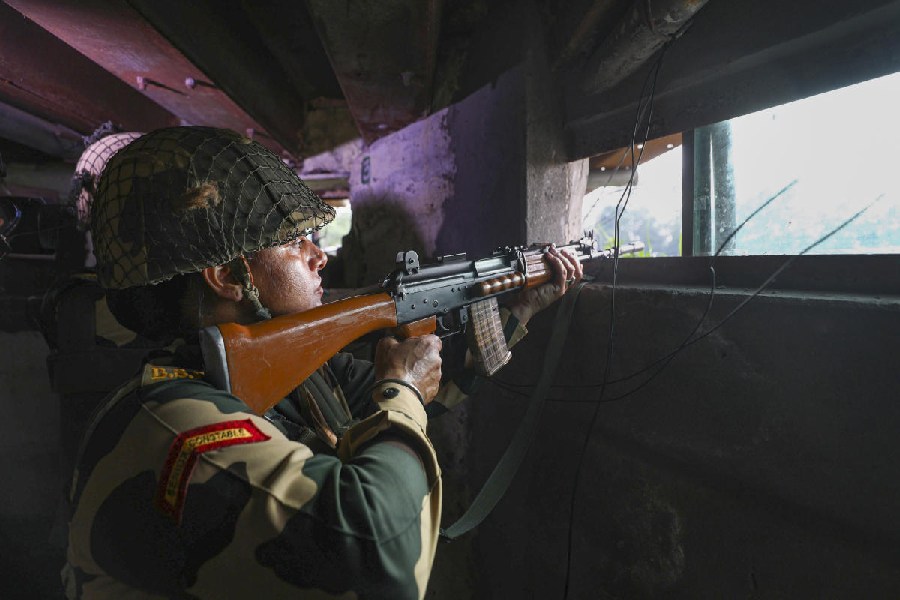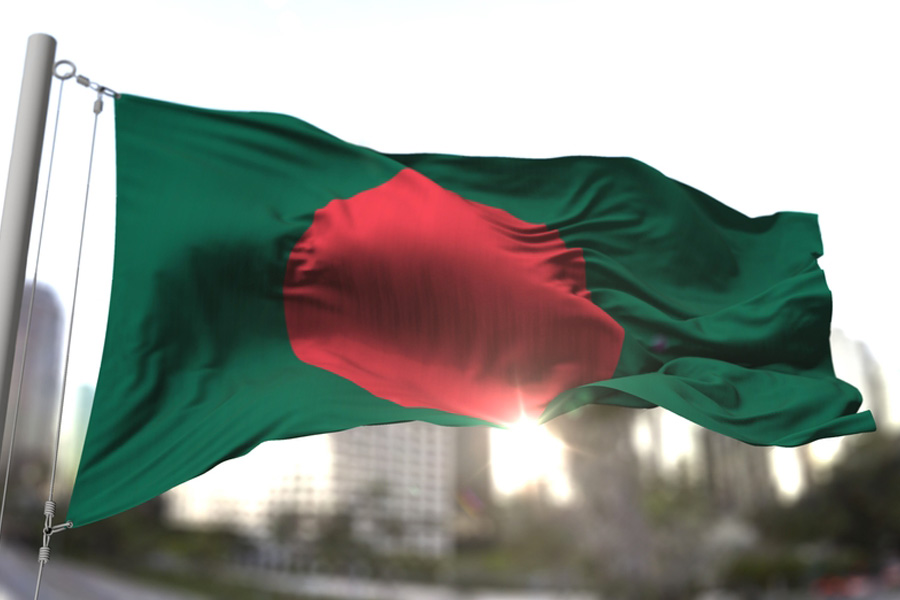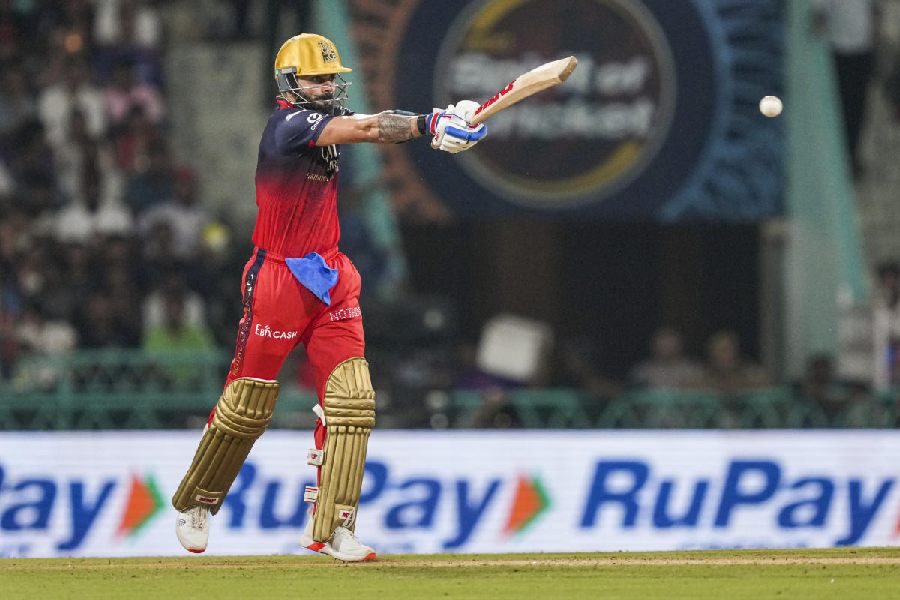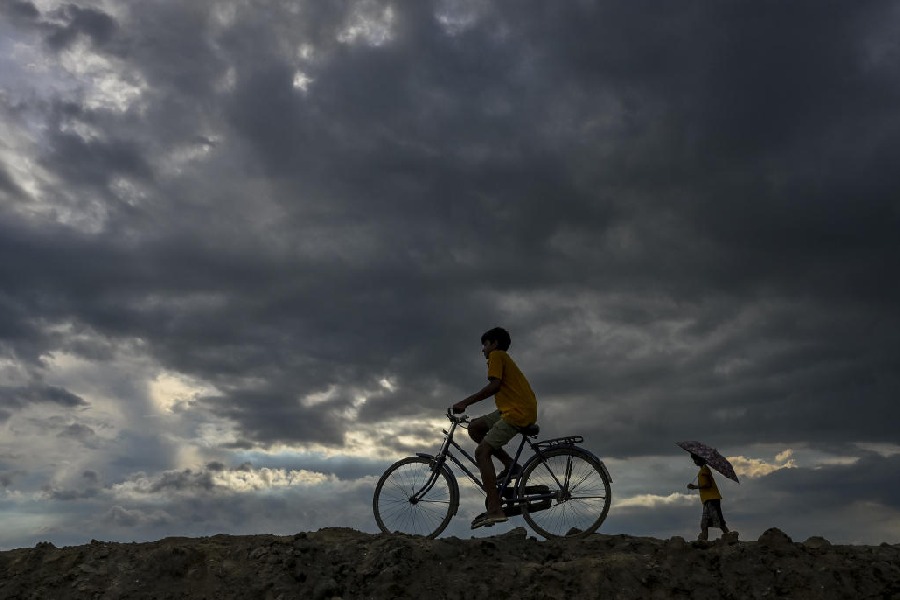 |
This is an artist whose art begins with his signature. Quite literally, with the way he signs his name on his works. Disrupting the flow of the Bengali script, the signature is made with a few staccato marks. As though some dry, broken twigs had tumbled to the ground forming a chance scatter of lines that echoes East Asian calligraphy and blends with the landscape the artist is known for. And spells his name, too: Ganesh Haloi, whose solo show, Linear Abstraction, was seen at Akar Prakar recently.
Because the scatter of lines, dashes and specks — lean, knobby, abrupt, repetitive — is something of a Haloi hallmark and proposes tentative diagrammatic explorations, which seek to map the anxious meditations of a romantic temperament and often stray into the unplanned, unbidden.
This sense of tentative exploration is enhanced both by the media Haloi works with and by the palette he chooses. Gouache is his favoured medium most often, but this time, watercolour has also been put to subtle use. Unlike the certainty of oil, its thin, luminous stains permeate one another, particularly at the edges, spreading in accidental capillaries and dappled clouds uncontrolled, as it were. The dense, matte, teased layers of gouache on handmade paper approximate the tactility of murals weathered by the caprice of time. The restoration the artist was once engaged in at Ajanta has, evidently, been a vital influence, inspiring him to evoke the rich texture of age in his colour fields strung with geometric segments.
The colour grounds are usually in hushed tones — off-white, beige and grey — but sometimes they are dark and brooding. In both cases, the litter of delicate veins that textures the handmade paper articulates the unease — the little stumbles and nervous stutter— of a sensitive introvert whose negotiations with external reality aren’t smooth. Like a few other artists of his generations, Haloi had been badly affected by Partition, which uprooted him from his native Mymensingh, then East Pakistan (later Bangladesh), when the 14-year-old moved to Calcutta with his family. This experience scarred his sensibility deeply, nurtured his memory of the lush landscape he’d left behind, and enriched his creative imagination. Hence, egrets and banana trees in his earlier paintings recalled the nature he’d grown up in, though they are also common to West Bengal. With time, however, representational forms were gradually shed for captivating colour patterns that grew increasingly reticent without becoming austere.
In a region where representational art has been the dominant trend; in a generation of artists that experimented mainly with figuration; in an ethos that didn’t encourage landscape as a serious genre, Haloi has been something of an exception. As his landscapes were distilled into colour patterns, shorn of recognizable references, they grew more dense in emotion, more arcane in their coded intimacy. For a time, architectural geometry had begun to appear in his art. But its deliberate, somewhat arranged neatness, its sense of substance and depth, lacked the surprise, the tenuous ambiguity of the colour patterns.
The colour patterns, the terrains of colour that were on view this time, have been produced in recent years and evoke space as transient, imminent, with suggestions of imperceptible flux. This series largely continues the masterly understatement that you see in the best of Haloi. If architectonic shifts are insinuated in one work, geometric colour zones enclosed in rough dark bands with jagged edges resemble a broken kaleidoscope in another to set off a brittle alarm. As mottled blues and greens with little diagonal lines draw you into the rain-drenched vividness of Bengal’s countryside in a third, wiry surface scratches in yet another make you think of the spare, skeletal remains of some creature that wait to be claimed by the earth. While scraps of colour seem to fetch up from horizontal tiers in one work — as though these were enigmatic clues waiting to be excavated and unveiled — calligraphic scribbles or tattered weaves of quick, rough lines lend buoyant whimsy elsewhere. On occasion there’s also the hint of forms, as seen in a Miróesque biomorphic shape in one painting.
The works cited above are quite representative of Haloi’s mature style. But this time he displayed several black and white sketches in watercolour also. Their spontaneous doodling and strokes, edgy lines and stippling, smudges and trailing dots spell intriguing configurations that don’t clearly echo known objects and shapes, but archly suggest they could. The childlike fantasy in some complements the spry brevity in others, but both are touched by a gentle, reflective mood of play.










